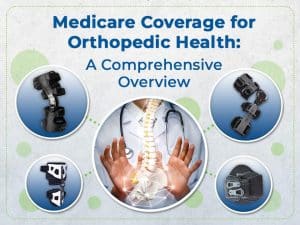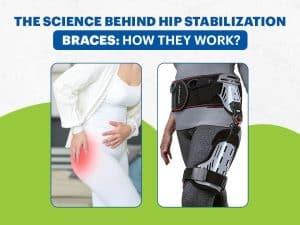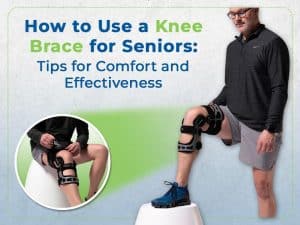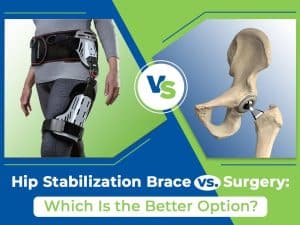Hip stabilization braces are orthopedic devices designed to support, alleviate pain, and improve mobility in individuals with hip-related issues. Whether you’re recovering from surgery, managing chronic conditions, or seeking stability during physical activities, hip braces play a crucial role. In this article, we’ll delve into the science behind these braces, exploring how they work and their impact on hip joint health.
The Anatomy of the Hip Joint
Before we dive into the mechanics of hip stabilization braces, it’s essential to understand the basics of the hip joint. The hip joint is a ball-and-socket joint formed by the femur (thigh bone) and the acetabulum (a concave socket in the pelvis). This joint allows for a wide range of motion, including flexion, extension, abduction, adduction, and rotation. However, its complexity also makes it susceptible to various issues, including injuries, arthritis, and degenerative conditions.
The Role of Hip Stabilization Braces
Hip stabilization braces work on the principle of providing external support to the hip joint and surrounding muscles. Their primary functions include:
- Stabilization: The core function of a hip brace is to stabilize the hip joint. It restricts excessive movement, which can be especially beneficial during post-surgery recovery. Limiting motion helps prevent unintended strain or stress on the joint.
- Pain Relief: Many individuals with hip problems experience pain and discomfort. Hip braces often incorporate compression and padding to reduce pain by minimizing pressure on the affected area. This targeted pain relief can significantly improve the quality of life for those with hip issues.
- Muscle Support: Hip stabilization braces also support the muscles around the hip joint. Weak or injured muscles can lead to instability and further joint damage. Braces help address this by assisting in muscle function and preventing muscle fatigue.
- Improved Mobility: Unlike the misconception that braces restrict mobility, well-designed hip braces can enhance it. By stabilizing the joint and reducing pain, individuals often find it easier to move, walk, or engage in previously challenging physical activities.
The Mechanism of Hip Braces
The exact mechanism of hip braces can vary depending on their design and intended use. However, most hip stabilization braces share some common features:
- Adjustable Straps: Hip stabilization braces are typically equipped with adjustable straps or closures. These straps are crucial in ensuring a customized and secure fit for the brace. By allowing users to adjust the tightness and positioning of the brace, they can achieve optimal support without causing discomfort or impeding circulation.
- Compression Elements: Many hip braces incorporate compression elements into their design. These elements consist of specially designed components that gently apply pressure to the hip joint and the surrounding muscles. Compression serves multiple purposes, including reducing swelling and inflammation, improving blood circulation, and relieving pain. This mechanism can help individuals experience significant relief from hip discomfort.
- Rigid Panels or Inserts: Some hip braces are designed with rigid panels or inserts strategically placed within the brace structure. These panels serve as stabilizing components that limit excessive movement of the hip joint. By restricting undesirable motion, these braces help maintain proper alignment and reduce strain on the hip, leading to enhanced stability and pain reduction.
- Breathable Materials: Comfort is a top priority when wearing a hip brace for extended periods. Hip braces are often crafted from breathable and moisture-wicking materials to address this. These materials ensure adequate ventilation and prevent excessive sweating, reducing the risk of skin irritation and discomfort. Breathability is particularly crucial for individuals who require prolonged brace use.
- Range of Motion Control: Depending on the specific hip condition being treated, hip braces may offer a controlled range of motion options. This feature is particularly valuable during rehabilitation and post-surgery recovery. It allows individuals to gradually and safely regain mobility while ensuring the hip joint remains stable and protected.
Read More: The Benefits of Using a Hip Support Brace for Pain Relief
The Benefits of Hip Stabilization Braces
Hip stabilization braces are valuable tools for individuals dealing with various hip-related issues. Understanding these advantages can help you appreciate the positive impact these braces can have on your hip health and overall quality of life:
- Reduced Pain: One of the primary benefits of hip stabilization braces is their ability to reduce pain and discomfort associated with hip conditions. These braces provide targeted support and compression to the hip joint, alleviating strain and pressure. This, in turn, leads to a noticeable reduction in pain levels, allowing individuals to experience relief and improved comfort.
- Enhanced Stability: Hip braces play a crucial role in enhancing the stability of the hip joint. This added stability benefits older individuals prone to balance issues and a higher risk of falls. Hip braces help mitigate the chances of accidents and injuries by reducing instability, ultimately promoting a safer and more secure daily life.
- Improved Function: With the support of hip stabilization braces, individuals can enjoy improved overall hip joint function. These braces help facilitate smoother and more natural movement, making engaging in daily activities and routines easier. Hip braces can contribute to better mobility and functionality, Whether walking, climbing stairs, or simply getting up from a chair.
- Faster Recovery: Hip stabilization braces can aid the healing process for those recovering from hip surgery or injury. These braces offer protection and support to the hip joint, ensuring it remains stable and properly aligned during the crucial recovery period. Hip braces can help individuals recover more quickly and efficiently by promoting optimal healing conditions.
- Non-Invasive Solution: One of the most significant advantages of hip stabilization braces is that they offer a non-invasive alternative to surgical interventions. Many individuals prefer non-surgical options for managing their hip issues, and hip braces provide an effective solution that doesn’t involve invasive procedures. This makes them a preferred choice for those seeking relief from hip-related problems without the risks and recovery associated with surgery.
Choosing the Right Hip Stabilization Brace
Selecting the appropriate hip stabilization brace ensures optimal comfort, support, and effectiveness. When making your choice, consider the following factors:
- Type of Hip Condition: The first and foremost consideration is identifying your specific hip condition. Different hip stabilization braces are designed to address various issues, such as arthritis, hip joint instability, or post-surgery support. Consulting with your healthcare provider or orthopedic specialist is essential to determine the most suitable type of brace for your condition.
- Comfort and Fit: Comfort is critical when it comes to hip braces. Ensuring that the brace fits correctly and comfortably is crucial for long-term use. Look for braces with adjustable straps, closures, or customizable features to achieve an ideal fit. Additionally, braces made from breathable materials should be considered to prevent excessive sweating and skin irritation, especially during extended wear.
- Doctor’s Recommendation: Always seek your healthcare provider’s or orthopedic specialist’s guidance before choosing a hip stabilization brace. They possess valuable expertise and insights into your specific condition and can recommend the most appropriate type of brace and fit for your unique needs. Following their recommendations can lead to better outcomes and enhanced comfort.
- Mobility Needs: When selecting a hip brace, consider your activity level and mobility requirements. Different braces offer varying flexibility and support, catering to various mobility needs. If you have an active lifestyle or require significant hip joint movement, opt for a brace that allows for the necessary range of motion while providing adequate stability and support.
- Medicare Coverage: For Medicare beneficiaries, it’s essential to explore whether your hip stabilization brace may be eligible for coverage under Medicare Part B. Understanding the coverage options available and the specific criteria for reimbursement can significantly impact your decision-making process. Inquire with Medicare about the coverage details and the required documentation for a smoother reimbursement process.
Incorporating a Hip Stabilization Brace into Your Life
To maximize the benefits of a hip stabilization brace and seamlessly integrate it into your daily routine, consider the following steps:
- Consult Your Doctor: The first and most crucial step is to consult your healthcare provider or orthopedic specialist. They will assess your specific hip condition, recommend the appropriate type of hip stabilization brace, and ensure it aligns with your medical needs. Always follow their guidance and prescription for the best results.
- Proper Fit and Comfort: Once you have your hip stabilization brace, ensure it fits correctly and comfortably. An ill-fitting brace can lead to discomfort and skin irritation. Most braces come with adjustable straps or closures, allowing you to customize the fit to your unique hip shape and size. Take the time to adjust the brace properly to avoid unnecessary pressure points and discomfort.
- Gradual Increase in Activity: If you are recovering from hip surgery or an injury, gradually increasing your activity level is essential while wearing the brace. While the brace provides stability and support, overexertion or sudden movements can still strain the hip joint. As your healthcare provider recommends, start with light activities and gradually progress to more strenuous ones.
- Regular Maintenance: To ensure the long-term effectiveness of your hip stabilization brace, follow the manufacturer’s instructions for regular cleaning and maintenance. Cleaning the brace as recommended prevents the buildup of dirt and bacteria, preserving its hygiene and functionality. Proper maintenance extends the lifespan of the brace and ensures it continues to provide the support you need.
- Medicare Coverage: If you’re eligible for Medicare and considering a hip stabilization brace, it’s essential to understand the coverage options available. Inquire with Medicare about the specific details of coverage for hip braces and the documentation required to facilitate reimbursement. Being well-informed about Medicare’s role in covering orthopedic devices can help alleviate financial concerns and ensure you receive the support you need.
Conclusion
In conclusion, hip stabilization braces are valuable orthopedic devices that work by providing support, pain relief, and improved mobility for individuals with hip issues. Understanding their mechanisms and how they benefit hip joint health can help individuals make informed choices when considering these braces as part of their treatment plan. Whether recovering from surgery or seeking relief from chronic hip pain, these braces can significantly impact your daily life.










